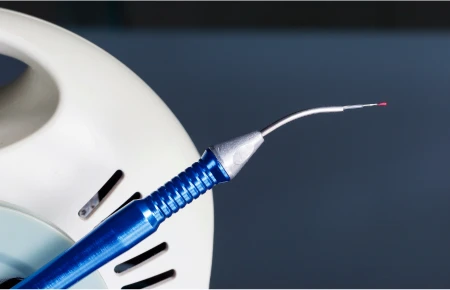The Concerns and Risks Associated with Laser Dentistry

Laser dentistry is becoming increasingly popular in the dental profession. It is a minimally invasive procedure that uses a laser to remove tooth decay, reshape gums and teeth, and even perform minor oral surgery. While laser dentistry has many benefits, there are some risks and concerns that should be taken into consideration before deciding to undergo this type of procedure.
The first concern with laser dentistry is the potential for tissue damage. The laser beam is very powerful and can cause serious damage if not handled properly. This is why it is important to find a dentist who is experienced with laser dentistry and has the proper training and certification to safely and effectively use the laser. It is also important to ensure that the dentist is using the most up-to-date laser technology available.
The second concern is the potential for infection. Laser dentistry can cause a slight burning sensation during the procedure, which can increase the risk of infection. To reduce the risk of infection, it is important for the patient to follow all pre-and post-operative instructions given by the dentist.
The third concern is the cost of laser dentistry. It is usually more expensive than traditional dental procedures, so it is important to consider the cost before making a decision. In some cases, dental insurance may cover some or all of the costs, but it is important to check with the insurance company first.
Finally, there is a concern about the safety of laser dentistry. While the procedure is generally safe when performed by a qualified and experienced dentist, there is always a chance of complications. It is important to discuss any potential risks and concerns with the dentist before undergoing the procedure.
Overall, laser dentistry has many benefits and can be a great option for certain dental procedures. However, it is important to understand the risks and concerns associated with the procedure before deciding on whether or not to undergo it. In most cases, laser dentistry is a safe and effective way to treat dental issues, but it is important to weigh all of the risks and concerns before proceeding.
The Need for Proper Training and Certification of Practitioners
The use of lasers in dentistry requires specialized training and certification of practitioners to ensure the safe and effective use of the technology. Practitioners must have the necessary experience and knowledge to use the laser safely and effectively. The use of lasers in dentistry has been accepted as a safe and effective form of treatment, however, it is important to ensure that practitioners are properly trained and certified to use the laser technology.
The American Dental Association (ADA) has developed guidelines for the use of lasers by practitioners. These guidelines outline the responsibilities of practitioners, such as the need for appropriate training and certification. Practitioners must understand and follow these guidelines to ensure the safety of patients and minimize any potential risks.
In addition, the ADA has established a program to certify practitioners in the use of lasers. This certification program requires practitioners to pass an examination and demonstrate competency in the use of laser technology. This certification is important to ensure that practitioners have the necessary knowledge and experience to safely and effectively use lasers in their practice.
The Potential For Damage to Surrounding Tissues and Structures
Another concern associated with laser dentistry is the potential for damage to surrounding tissues and structures. The laser beam is very powerful and can cause serious damage if not handled properly. This is why it is important to find a dentist who is experienced with laser dentistry and has the proper training and certification to safely and effectively use the laser. It is also important to ensure that the dentist is using the most up-to-date laser technology available.
The potential for tissue damage is greatest when treating areas near the gums or other sensitive areas. In these cases, it is important to ensure that the dentist uses a low-energy laser beam. This will help to minimize the risk of tissue damage while still providing the desired results.
In addition, it is important to follow all pre-and post-operative instructions given by the dentist. This may include using a special mouthwash or taking antibiotics to reduce the risk of infection. It is also important to ask questions and understand the potential risks and benefits of the procedure before proceeding.
The Need for Careful Selection of Patients and Careful Planning of Procedures
The use of lasers in dentistry requires careful selection of patients and careful planning of procedures. Laser dentistry can be a great option for certain dental procedures, however, it is important to consider the individual's needs and the complexity of the procedure before deciding to use a laser. For example, some dental procedures may require more complex treatments that may not be suitable for laser dentistry.
In addition, it is important to consider the patient's dental history and current health status before deciding to use a laser. Laser dentistry can be a great option for some patients, however, it is important to ensure that the procedure is safe and suitable for the individual patient.
Finally, it is important to plan the procedure carefully. The dentist must consider the types of laser the type of procedure, and the patient's individual needs before proceeding. It is also important to carefully monitor the patient during the procedure and to follow all pre-and post-operative instructions.
To learn more about types of laser dentistry and ask your questions, give us a call at 248-650-2440 or visit our dental clinic .
Please visit our Facebook page for more information.






